Wieliczka Salt mines lie in a small town named Wieliczka, just at the outskirts of charismatic Krakow in Poland.
After our disheartening trip to Auschwitz concentration camp, we were in dire need of some nice and uplifting moments. Our Guide Wojciech from Cracow holidays helped us out. We had long talks with him about Polish culture, economy and history while heading towards Wieliczka Salt mines. After a ride of about an hour or so, we were all excited for our next venture: The salt mines!
But first, some history
Salt started depositing in Wieliczka about 13.6 Million years (yes! That long ago!) but the mines were first discovered and dug out in the 13th century. Wieliczka mines have been a very important part of Polish history and economy since then. The mine entered UNESCO’s First World List of Natural and Cultural Heritage already in 1978 , as one of the first twelve sites of the world.
Also read about, UNESCO’s historical heritage old town of Salzburg and Bern.
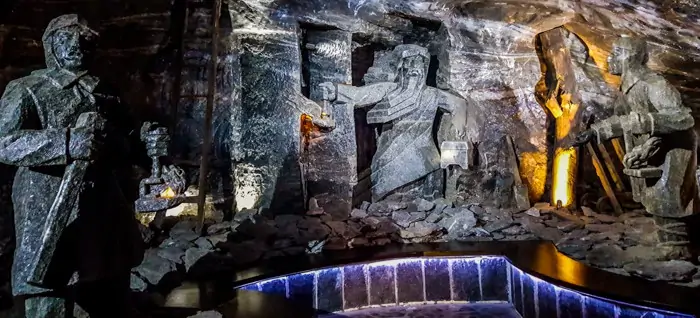
Salt mines tour
For safety reasons, the tour can only be done in a group with an official guide only. Our tour began with a long descent of 350 steps (135m depth). Then we had almost three km of saline corridors twisting, turning and taking us to 327m depth in total (Comfortable shoes recommended!). During the tour, we saw three beautiful underground lakes. We saw a range of tools from medieval times till now to dig up and transport salt within and outside the mine. There were many sculptures as well. Mineworkers and not the professional artists made most of these sculptures. It was so difficult to believe that they are made up of salt as they seem rather grayish due to their crystallization.
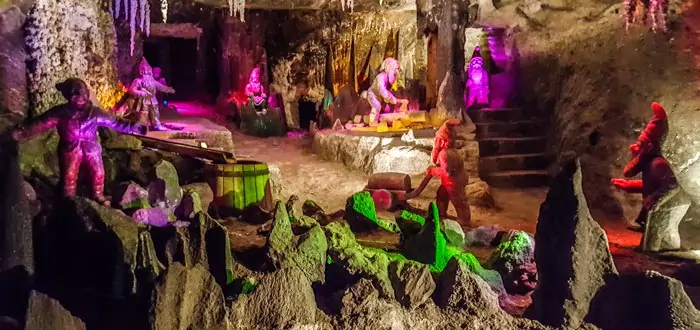
Once, during the tour, guide actually suggested us to lick the walls. (He joked that we could lick either the roof or the floor or the wall. The roof was too high, the floor was a big NO for me (and everybody else) but some people were brave enough to try it off the walls. Of course, I tried it. How often do you get a chance to lick salt off a wall? The salt was a bit more saline than the normal table salt. The salt we tried was called cauliflower salt because its deposit looks like cauliflower. See, who came out all intelligent. 😀
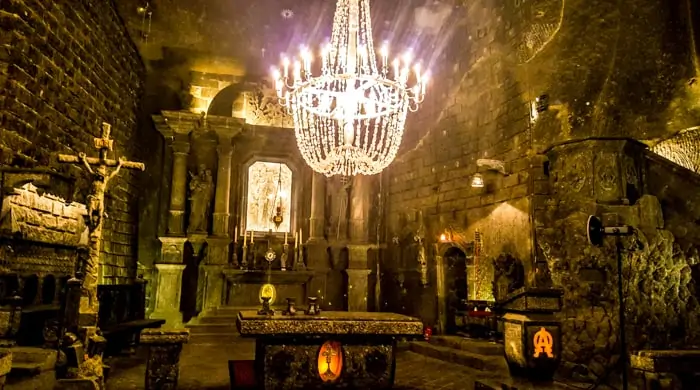
Vitae sal amicita – Friendship is the salt of life — A Roman saying. Is it a coincidence that in India (or at least in Bollywood), salt is treated as a symbol of loyalty.
And the legends
I love legends. I love how some myths and stories, traveling from generations to generations, integrate into our cultures. Be Olympus (for Olympic games) from Greece, Rani Padmavati from Chittorgarh or St Kinga, each one of them is unique and interesting.
Kinga was born as a princess to King and Queen of Hungary. The legend says that Kinga threw her engagement ring into the Maramures salt mine in Hungary. The ring miraculously traveled along with salt deposits to Wieliczka where it was rediscovered. Kinga was always involved in charitable works. After her husband’s death, she sold all her material possessions and gave the money to the poor. Now there is a Chapel dedicated to St. Kinga in Wieliczka salt mine depicting where the miner found her ring. This chapel can now be booked for events like Graduation party or dinner events.

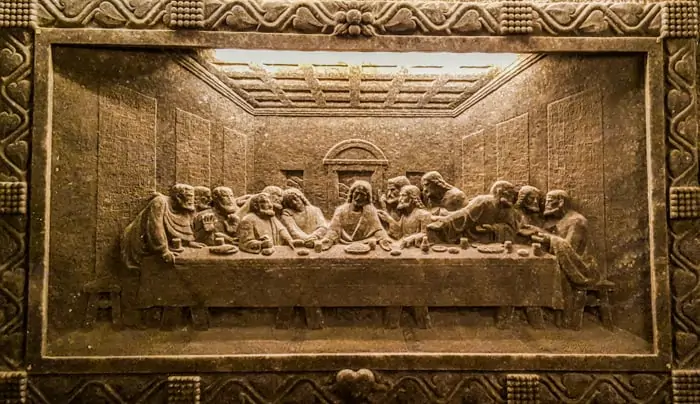
Craziness at Wieliczka
Because the mines are so deep, they are perfect for these crazy-deep-under-the-earth world record competitions. For example, bungee jumping and hot balloon flight at this depth. They even won some of these crazy competitions! They also have a windsurfing competition in the underground lakes. Nevertheless, we absolutely loved the tour. Our salt mine guide was very funny and made it a memorable walk.
Tips
- Plan you trip before hand. Especially if you planning the Auschwitz trip as well. Get the tickets at least 15 -30 days in advance.
- Check the guided tour timings at the Wieliczka salt mine website.
- Entry ticket costs about 84 PLN (~20 euros) for regular visitors and 64 PLN (~15 euros) for foreign students up to 26 years of age. These tickets are cheaper for locals.
- Wear comfortable shoes.
- Multiple language guides are available (English, German, French, Spanish, Russian and Italian) at different timings. Check the timings here.
- The tunnels are deep and not suitable for people who are not comfortable being trapped in a closed space.
- Some parts of the mines are slippery and need extra attention.
P.S.: As I told you above, we combined the tour with the Auschwitz camp visit. We made a smart decision of choosing Cracow holidays for our tour. The two sites were very far from each other and we were traveling with a 3-year-old (very cute) kid. We were very happy with their services and will rather book them again when we go there. Wojciech was very interactive, punctual and helpful. and NO this is not a paid post. I just liked their services and that is why promoting them! 🙂
If you like this guide, please like, comment and share it with your friends 🙂 Or pin it for later read.
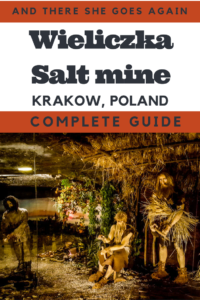
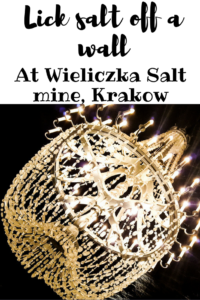
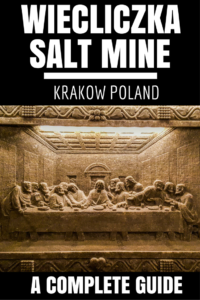
Vee N Ric says
Hi Nisha.
How are you?
Came over to your blog after seeing your post on Indiblogger.
We are a married couple from Mumbai, very new to blogging.
Loved your post. Very interesting.
Trust you will find some time to visit our blog and leave a comment on our new post.
Best wishes and regards.
Vee N Ric
Subha Rajagopal says
Difficult to believe sculptures made of sand!I loved the part about licking salt from the wall!Must have been a crazy experience.Nice post!
Nisha Dalal says
Oh it was fun 🙂 and Sculptures are actually made up of salt, not sand.
Tina Basu says
salt sculptures!! They are so pretty and intricate!
Nisha Dalal says
Yes! I liked them a lot. It was so difficult to believe they were really made up of salt crystals.
Pikakshi Manchanda says
Wow! Can’t imagine the mines being used for under-ground events..
The chandelier is another Wow! The story of Kinga …quite nice.
Loved the post. Quite deep (pun intended) 🙂